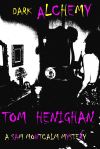Ideas, Words, Images
To see a list of Tom’s books and covers click here!
Hello Out There!
Yeah–this is my current & frequently updated JOURNAL
DROP IN AND SHARE SOME THOUGHTS on fantasy, the other world, the Canadian north, soccer in the 1930s a la “Hennigan,” marketing culture, the media and globalism, the Odyssey, W.H. Auden, beasts, creativity, teacher evaluation, and what’s wrong with Ottawa–and learn how, once upon a time, I solved a murder. . .
AND, SPEAKING OF MURDER, HERE’S DARK ALCHEMY, MY SECOND MONTCALM MYSTERY JUST OUT ON AMAZON and SMASHWORDS, AND COMING SOON TO SONY, APPLE, BARNES & NOBLE, KOBO AND ALL THE OTHERS!
YOU CAN DOWNLOAD IT RIGHT HERE:
https://www.smashwords.com/books/view/252023
Or on AMAZON.COM (Tom Henighan: Dark Alchemy)
C.G. Jung’s Red Book, Vivaldi, Depleted Uranium. . . In this new take on classic noir, California-born private eye Sam Montcalm, a tough guy with a taste for the arts, challenges a government conspiracy of silence, and learns about Jung and alchemy as he follows two powerful women to a climax of violence beside the Angel’s Flight railway in LA.
In California he finds a world of murder, conspiracy, and passion, while being initiated, via the Red Book, into the alchemy of personal transformation. He encounters a U.S. government cover-up involving the use of depleted uranium in battlefield weapons, and learns that these may have resulted in genetic damage to civilians in Iraq and elsewhere. As Sam digs into the case and tries to expose the perpetrators, he begins to understand that the alchemy of weapons production originates from an alchemy in the soul that chooses power over self-knowledge.
Five stars on Amazon from novelist Robert MacLean, who posts:
“What you get when Tom Henighan adapts himself to a genre like the detective novel is something very like a whole self, “very like” because thewhole self is always an illusion, even in life.
But illusions are what we thrive on, and Dark Alchemy delivers a man both confident and full of doubt, knowing and in the dark, refined and with a taste for vulgarity.
Like Anthony Burgess he pulls a great deal into his hero’s world and predicament–women, social anxiety, cities and their taste, Monet, Jung, languages, Vivaldi, gourmet food, mysticism, painting, antiques, sculptures, designer beer–all from a calm but anxious late-middle-aged point of view. You run your fingers through this world, but not without a certain skittishness.
This is a mature book about a man for whom time is beginning to speed, trying to get a grip on what he feels and thinks. I recommend it.”
ALSO Read Nightshade (2010), the first Sam Montcalm mystery. Nightshade was recently short-listed for Best Paperback Original category for the Shamus Awards at the Bouchercon.
For more on Sam Montcalm click here!
Two comments on the first Sam Montcalm book
“Tom Henighan has crafted a multi-layered story with a very human, very imperfect protagonist, a wonderful descriptive writing style, and a tale of crime and passion for our times. –Linda Wiken, writer, editor (Mystery Maven Canada)
“I enjoyed Nightshade on many levels! The art and music experiences throughout the book were great, especially as an integral part of Sam Montcalm’s personal life. His complex personality makes him an engaging character; a very cultured hard-boiled detective who is sensitive to Art and Nature. The characters have a rare richness because you inform them with so much of your own experience, knowledge, taste and sensitivity.”
–Rosemary Dalgliesh, Ottawa artist
(The Globe and Mail liked it too)
For more on Sam Montcalm click here!
ALSO JUST OUT! Some good Christmas reading for 9-12s–and others!
AN IRISH CHRISTMAS TALE THAT EVERYONE WILL ENJOY!
The Christmas Demons
The time is December, 1837, and the Daly family, Irish immigrants, are struggling to survive on a farm in Upper Canada (as Ontario was then known). The country is in turmoil thanks to exploitation of the poor, land swindles, and the suppression of freedom by the wealthy Tories.
One day Old Mr. Moss, who has threatened to foreclose on the Daly farm, arrives with a dark stranger named Ferguson, and begins referring to “Tir-Nan-Og,” the legendary Irish land of bliss. He invokes Tim’s help, and he and his sister Kate are soon tested by the arrival of Mr. Bender, a sinister peddler with supernatural powers. On Christmas Eve, the two find themselves in a magic realm, where the battle between good and evil is in full tilt. With the help of Harami, an Arab outlaw and the Jewish sage King Solomon, they fight to revive the dying Tir-Nan-Og. But can they defeat the evil Mr. Bender, who is the embodiment of Samael, the Dark Lord? Adventure, horror, comedy, politics, and history blend in this story, which reaches its climax on Christmas Day when the figures of myth come alive, and two worlds meet.
(Demons is available right now from SMASHWORDS AND ALL MAJOR WEB PUBLISHERS -for $1.99. Great Xmas reading!)
NOVELIST LARRY McCLOSKEY GIVES IT FIVE STARS AND WRITES:
“Young adult plots often follow a predictable and formulistic pattern, with characters that are less than memorable. The Christmas Demons is full of interesting twists and turns and is anything but predictable. Tim, as the gifted and cursed protagonist, and his sister Kate, are well developed characters whose fate the reader eagerly anticipates following until the end.
The story starts out as a nicely crafted lilt about Irish settlers in Lanark county. This part of the novel is so well laid out that Mr. Henighan could have written a solid novel with this material alone. But then he combines all the traditional elements with a unique and fascinating bit of fantasy, flush with lively Irish mythology. This novel is delightfully dense with lots of fun, action, danger, and characters you really care about– and perhaps hardest to pull off, it will appeal equally to boys and girls. The writting is superior, and most important to a young adult audience, it is a really good read. I recommend this book very highly.”
AND HERE’S ANOTHER FINE READ, ONE THAT DEALS WITH . . .
STONEHENGE, ECOLOGY AND ADVENTURE!
In June, 2012, I published my first online book, Tunnel Down to Moonrise, an exciting quest novel for adults and older teens. Yes, the book involves time-travel, and a visit to the early Stonehenge world, but it’s also got romance and a strong sense of ecological crisis–as my main characters Jack and Cleo and their friend Arthur Harker battle an international mafia group determined to dominate and transform this earth–for the worse! This is part of my continuing “Fallen Light” series, which will combine mythology, ecology, science and adventure to create what I’m hoping will be an exciting story for all kinds of readers . This novel is available on Amazon Kindle and Smashwords http://www.smashwords.com/books/view/168128 right nowand before long with be with all the major e-book distributors. Check the links on my Amazon Author Central page for morehttp://www.amazon.com/Tunnel-Moonrise-Fallen-Series-ebook/
In February, 2012 I was asked to do “The Proust Questionnaire” for Open Book, Ontario, and Open Book, Toronto. To read my answers, or just to see what the questionnaire involves, click here!
What happened to the baseball Babe Ruth hit for his first home run?
My new novel THE BOY FROM LEFT FIELD. is out now from DUNDURN. It takes place in TORONTO (RIVERDALE). The boy-hero is half-native and there is a splendid Chinese-Canadian girl in it named PANNY CHANG. (What you see immediately below left isn’t the cover, but at least it shows a baseball game and some human beings, even kids! –By the way that’s A.J. Burnett pitching in Ottawa! The actual cover is rather attractive and very clever (see below) but doesn’t show any kids in action!) 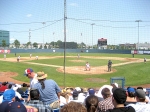
The Boy From Left Field is not only about baseball; it’s a quest story and is about confronting bullies, street gangs, and making it against the odds. As one reviewer suggests(see below), it is very successful in showing how Hawk’s own native heritage contributes to his finding identity and equilibrium in the wider Canadian context.
Here’s the book cover. Should be available in almost all bookstores, I hope!
“An entertaining and educational story that will appeal to a wide range of readers” (CM Magazine)–see more below
“…Readers will be satisfied with the interesting and inspiring story about a half-Aboriginal protagonist who forms a positive self-identity, develops his self-confidence, and gains acceptance and belonging within his community through his adventures and daily experiences.” (Canadian Materials )
An excerpt from The Boy From Left Field
Hawk jogged through the Riverdale streets, eager to get to the practice field. The sky had turned overcast, a sharp wind blew bits of paper and cast-off coffee cups along the sidewalk. Hawk shivered and kept on moving. Images from the day at school flashed through his mind–they weren’t all bad, but already there was almost too much pressure on him. The other kids seemed to take everything in stride, but he was different. He was the one who’d been living first in a taxi, and now a restaurant, the kid who’d been held up and robbed by the Rippers gang, the kid who had latched on to the dream of finding a magic baseball that the great Babe Ruth had once hit for a home run. He was the Grade Four kid who had to take on a school project halfway through the year and try to match the work of the brightest kids in the city.
For an instant he felt weighed down, helpless, but minutes later, when he was at his gloomiest, his most doubtful, he suddenly remembered something his father had told him a couple of years before. . . .
. . . Hawk had forgotten his dad’s exact words, but he remembered the message: find the power in yourself, believe in it! Be a warrior! And now, as he walked along these very ordinary streets in Riverdale, suddenly, under a cold, dull sky everything changed. (111-112)
Now below you’ll find an Informed and Detailed Review of The Boy From Left Field, not at all infected by PC poison, even though it contains errors and is uneloquently written, and misses the fact that my book is a contemporary take on the children’s classic Emil and the Detectives. But then no one noticed the obvious parallels with The Tempest in Doom Lake Holiday either! (Still, this critic is neither half-baked nor smart-assed as some kids and would-be “grown-ups” have shown themselves to be.) I’ve cut this critic’s text a bit, and removed a critique of Hawk’s father’s last speech, which no one likes, except me! Notice, however, that this critic does not find the speech “offensive.” In other words, he’s not smirking in the mirror at his own cheesy PC pose and prose.
An Honest and Fairly Well-Informed Review of The Boy from Left Field
In the past two decades, an increasing body of literature for children and young adults has dealt with the contemporary realities of living as a young adult from an ethnic minority or First Nations background. This can be seen in the works of Canadian authors such as Rachna Gilmore, Paul Yee, and Richard Van Camp. However, the body of literature is still comparatively small for its portrayal of protagonists from mixed ethnic and cultural backgrounds. Similar to people who are from a specific ethnic minority or First Nations background, people from mixed backgrounds may certainly experience similar uncertainties and discomfort about where they fit in and how they define their identity, but they may carry the additional burden of feeling marginalised or excluded from both backgrounds. With their mixed background, they may feel in limbo due to their lack of comfort in, or inability to, identify fully with one particular background or the other. As a result, these individuals may experience additional uncertainty with respect to their self-identities, but, at the same time, their circumstances can offer a unique opportunity for defining empowering identities that are unencumbered by specific cultural contexts’ predefined boundaries and expectations.
Tom Henighan’s The Boy From Left Field contributes to this body of literature and will be a good addition both to public and school libraries that are looking for stories with contemporary representations of protagonists from mixed backgrounds. Indeed, Henighan’s novel offers something for every reader due to its incorporation of plot-driven and character-driven elements. The age group to which it is targeted appears to be nine and up, although perhaps older readers may be less inclined to read about a protagonist who is only 10-years-old. Nevertheless, the novel can likely be enjoyed by readers up to twelve years of age. For the most part, the novel’s language will not pose a significant challenge for younger readers, but some of its cultural references may be better appreciated by readers in the upper end of the nine to twelve age bracket.
Henighan’s novel focuses on a half-Aboriginal protagonist named Hawk who lives in economically disadvantaged circumstances. Around this setting, Henighan weaves a mystery plot surrounding Babe Ruth’s missing baseball along with the everyday experiences of living as a young adult and as a minority in a gritty urban setting. Many other novels that deal with protagonists from non-European cultural backgrounds may focus on the protagonist’s cultural background and struggles arising out of it as the basis for the narrative’s progression. In contrast, Henighan’s novel differs in its focus. Hawk’s Aboriginal background does affect his daily experiences and self-perceptions in relation to his classmates and friends, but not in a persistent or prominent manner. The ways in which these struggles manifest themselves are inconsistent, subtle, and unexpected. Henighan’s novel can be seen as a story that is about a protagonist who happens to be half-Aboriginal, rather than as a story that is about a half-Aboriginal protagonist. This is not to discount the significance and impact of Hawk’s Aboriginal background on his life, but rather that Hawk’s background is but one aspect that shapes his experiences, along with his economically disadvantaged circumstances, problems in class, and his dealings with bullies and a street gang known as the Rippers.
Whether through personal experience or people whom they know, readers will be able to identify with Henighan’s portrayal of Hawk. His experiences with friends, leisure activities, and school are all things that children growing up deal with, regardless of the specific geographical context in which they grow up. Besides the novel’s focus on Hawk’s daily life in the urban city, school, and home, two mysteries drive the novel’s narrative and add a more action-oriented element that will appeal to readers who enjoy plot-driven stories. . . Although these two narrative threads initially develop independently of each other, they eventually link in an unexpected manner that will satisfy readers. By Henighan’s weaving plot-driven and character-driven elements in his novel, the story will appeal to all readers on some level.
The uniqueness of Hawk’s experiences, as a result of being a person of mixed heritage, may be unfamiliar to some readers, but Henighan effectively depicts these experiences in a non-reductive manner that will enable all readers to identify with and better understand them. For example, during the story, Hawk reconnects with his culture through his father, but this is portrayed in a non-reductive manner for Hawk can equally enjoy learning about animal’s names in his native language as well as enjoy the battle scenes in the movie Ivanhoe. Indeed, this effectively reflects how Hawk’s identity is shaped by his Aboriginal heritage as well as by the Westernized cultural context in which he lives. Hawk’s reconnecting with his Aboriginal heritage does not necessarily have to occur in a mutually exclusive manner from other cultural influences. Instead, these cultural influences can coexist with each other, as shown by Hawk’s acceptance of Aboriginal and Western culture in his life.
Living out of a taxi, finding class uninspiring, and feeling a lack of rootedness due to his and his mother’s living circumstances and frequent moves, Hawk feels like he does not fit in. However, Hawk’s placement into a special class for gifted children represents an important moment in his ability to fit in among peers. Even though he experiences cultural prejudice and bullying from Charles, another student who also bullies other kids, Hawk’s placement in that class allows him to gain self-confidence, associate with other kids who are more accepting of him, and reconnect with the Aboriginal part of his background Similarly, the area in which he lives signifies a culturally and economically diverse community of people who are willing to help each other, as seen by both the adults and Hawk’s peers who help him to investigate Elroy and the Rippers.
In books that focus on protagonists who are marginalised in their community due to discrimination, prejudice, and other circumstances, it can be easy to fall into a proselytizing or didactic mode of narration whereby the story’s narrator or a character functions as a mouthpiece for comments about injustices and criticisms or, alternatively, for recommendations about how certain wrongs can be righted or addressed. For the most part, Henighan’s novel successfully avoids this as the author portrays the consequences of being half-Aboriginal as well as poor through Hawk’s experiences without expounding judgements about him or the circumstances in which he experiences discrimination and prejudice.
Readers do not necessarily need to have an intimate understanding about First Nations history to appreciate the cultural references, since the novel provides sufficient context for readers to understand them. . . Knowledge about Aboriginal stereotypes will help readers to understand his father’s implicit criticism of how other people view First Nations people in a reductive and simplistic manner.
The Boy From Left Field is both an entertaining and educational story that will appeal to a wide range of readers. It falls short in its execution of certain plot elements, but, on the whole, readers will be satisfied with the interesting and inspiring story about a half-Aboriginal protagonist who forms a positive self-identity, develops his self-confidence, and gains acceptance and belonging within his community through his adventures and daily experiences.
Recommended.
Huai-Yang Lim (CM Magazine)
Forthcoming: MESSAGES FROM THE SUN & more
I’ve nearly completed three new collections of short stories (well, actually one is an expansion and re-writing of my well-received collection Tourists from Algol.)
One if these, MESSAGES FROM THE SUN is SF, metafiction and the like; the second is very much set in the real world of everyday relationships (the subtitle is TALES OF LOVE AND SORROW)–both of these will be out by January, 2013. And the third collection is called PLEASURE CRUISE and its stories follow the life of a boy born several decades ago in New York City. It should appear in mid-2013.)
Here are a few other books from my list of publications. All are available through Dundurn, Toronto, except for Coming of Age in Arabia. which you can order from Amazon, or Time’s Fools which you can get through me (email ft720@ncf.ca). Most of these books are in e-editions as well.
VILHJALMUR STEFANSSON, ARCTIC ADVENTURER (2009) 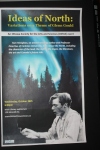
A biography of the great explorer of Canada’s north. “Henighan does a first-rate job of placing an otherwise enigmatic character into a useful interpretive framework. . . Highly recommended.” CM Magazine
I recently gave the initial talk in the new series at OSFAS (Ottawa Society of the Arts and Sciences). The talk was entitled IDEAS OF NORTH: VARIATIONS ON A THEME BY GLENN GOULD, and you can read the full version on this website. (The idea was to imitate the Gould approach, not to discuss it). The talk was liked by many.
“Henighan has crafted an involving coming of age story that blends adventure and an evocative setting with personal transformation”–The Bookshelf, Guelph.
“Tom Henighan follows convincingly in the tradition of Henry Treece and Rosemary Sutcliff in this re-creation of the Viking world. . . . This is a gripping story of adventure, but much more, for it projects a real sense of how the Vikings understood the world.”–Vancouver Sun
DOOM LAKE HOLIDAY (2009) 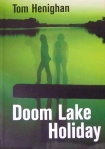
YA novel of the month –Canadian Living, July, 2008
This is an exciting, fast-paced book based in reality. . . and in magic and mystery, well worth a read.” –National Post
MERCURY MAN (2004) 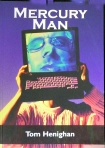
Henighan’s sci-fi fantasy is an entertaining amalgam of comic book adventure and paranoid high tech thriller.”–Quill and Quire
“Readers will be on the edges of their seats throughout the entire story, waiting to find out what happens to Tom. The author shows teens they can do anything they put their minds to, even take on a large corporation. The novel blends many elements together to create an enjoyable read from start to finish.”–Hamilton Spectator
COMING OF AGE IN ARABIA (2005) 
“One of the best books I’ve ever read on a British colony. You’ve caught perfectly the unique combination of comedy, or absurdity, and tragedy that marks the British experience as colonial masters.” –Dr. Paul Rich, Stanford; University of the Americas
“I’m loving the way you’ve turned your memoir into a kind of film noir, murder mystery, love story, travelogue and much much more… I’m totally enthralled.” –Richard Taylor
“I couldn’t put it down. It is entertaining, vivid, authentic in atmosphere, and has good balance between the personal and the observed. The historical and political material is deftly woven into the first-hand account so that it never becomes boring. . . Moreover, it is very funny in places, particularly that marvelous dinner at the Resident’s in Mukalla.” –Ambassador Michael E. Sterner, Washington
The liveliness of the narrative rivets the reader and makes him feel as if he were there. . .The old photos scattered through the text are lovely. . .This book contains innumerable scholarly passages, which help us understand the land, the people, and the political relationships in the southern half of the Arabian Peninsula. –Jemen-Report, Germany
“. . . he has given us a delightful, compelling account of those scorching days and starry nights in Aden.”–Globe and Mail
Time’s Fools (2010) 
“Finished the poetry book and really enjoyed it. Liked many poems but esp: “Mukalla,” “Star-Gazing,” and “Jade,” as well as a poem about Vivaldi that ends with “Listen:” (good stuff!)”– Mark Frutkin
Now two poems, quite different in style and theme. Talk to you soon!
ALMONTE LECTURES ON MYTH. Thanks to all those who participated in my recent short course on western mythology in the idyllic little town of Almonte, Ontario. You were a great audience and Don Wiles a wonderful organizer. Thanks also to Rob and Billie for tech and foodie experiences respectively!
TWO POEMS BY TOM HENIGHAN
The Ballad of Tarzan the Conqueror
They sneaked out of the garden
to cut a lettuce leaf
and Tarzan tracked Kulonga
with bazookas in his teeth.
O man, o man, you’ll be the death of me
For you have killed my mama
brave Tarzan said
and I am little English boy
with murder in my head.
Here’s the black and white of it
this jungle’s wearing thin
I munch red meat with Darwin
Don’t give a damn for sin.
Not pickninnies nor joblillies
nor the great Panjandrum’s code
will prevent your pacification
or cut down my payload.
We’ve pinned down every custom
and shattered every rite,
you can go pick up the pieces
in the forests of the night.
So said Lord Greystoke, Tarzan,
and was answered with a howl
when he carved Kulonga’s jugular
they were living cheek by jowl.
Then settling for the trinkets
until the oil wells ran
Tarzan signed a treaty
with brave Kulonga’s clan.
But ghostly spake Kulonga
when he saw how time sucked up
and machines came muscling in
between Livingston and Krupp
The cameras take the image,
the traders take the soul–
are we the price of silence
when the tanks begin to roll?
But Tarzan swings his shadow west
and all things come about,
we’re howling in our sleep, my friends,
for shaman and breechclout.
When culture swallows culture
how should progress carry on
without such myths as Tarzan
to spend our guilt upon?
O man, o man, you’ll be the death of me
“The Walk”
(Note: the Val Lewton-produced movies of the 1940s sometimes feature scenes where a character, usually a woman, walks through a fearful darkness. This is known to Lewton aficionados as “The Walk.”)
This street is made of breath and bone and fear.
The glare of the lamps guides you nowhere at all.
Walking, inside out, through shadows, overhearing
silence, or the clatter of steps close behind you,
keep on moving. Just get to the end,
do the errand. In the field find the crossroads,
don’t lose your money or your handkerchief.
There’s no danger, no war in the suburbs,
no barricades or trenches, no sniper on the roof.
You’re alone, heading home,
where a room, a warm bed will contain you.
Yet you walk so stiffly, your soul trembles
on your sleeve, your nerves snap
when the bus comes shrieking to a stop.
Machinery, I tell you, really harmless–
ignore all the portents. Women are safe
in this city. Blood running under the door,
claw marks, the rustle of leaves, or the low-
pitched growls of some animal—all imagined.
Stride across such boundaries, and discover
that other recension, where an open-armed night
welcomes the lost child, in your guise,
worn out by dreams and rehearsals
and eager to enact the final script.

